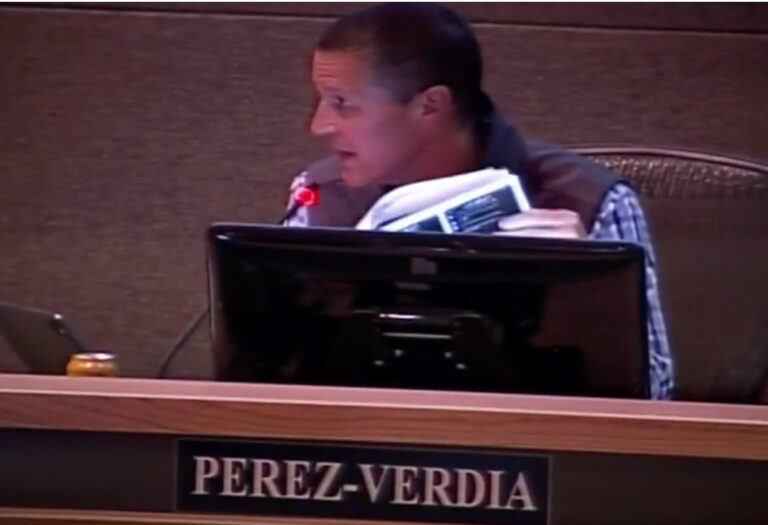By DAVID BOYLE
We have heard some teachers complain that they have more than 40 students in their classes. This may be true for a few certain required classes. But this is the exception rather than the rule. It does make for good chanting by the teachers’ unions.
There has been much discussion in the Alaska Legislature regarding capping the number of students in a classroom. This is called the pupil-teacher ratio (PTR).
Several bills have been filed to cap the number of students per classroom. Rep. Zack Fields (D, Anchorage) has filed HB 98 in an attempt to limit the pupil-teacher ratio in public schools. But his bill only applies to a district that has more than 40,000 students — the Anchorage School District. It seems that class sizes don’t really affect student learning anywhere else in Alaska.
Rep. Julie Coulombe (R, Anchorage) filed HB 165, which also caps the number of students per classroom. But her bill only applies to a district that has more than 35,000 students. It appears as if Rep. Coulombe recognizes that the Anchorage School District is quickly losing students to home schools and private schools. Interestingly, Rep. Fields signed onto her bill as a co-sponsor.
Rep. Coulombe is in a swing district and has to heed the K-12 education industry’s power in the next election.
The Anchorage Teachers’ Union wants to also limit the number of students per classroom. It reinforces this policy by charging the district for every student that exceeds the PTR. It is apparent that the union is very concerned with the declining number of students and the resultant loss of teacher union members.
Here’s where the data get very, very interesting. The Department of Education and Early Development submitted its Annual Progress Report to the legislature as required by AS 14.03.078. This report contains the PTRs for all Alaska K-12 schools.
Here are some Pupil-Teacher Ratios in selected school districts:
| School District | Pupil-Teacher Ratio |
| Anchorage | 17.95 |
| Fairbanks | 19.10 |
| MatSu | 18.89 |
| Juneau | 16.46 |
| Kenai | 15.92 |
Granted, the above are averages across the entire district. Some classes will have a large number of students; other classes will have very few students; and the district correspondence schools (home schools) will have extremely large classes. But the average gives one the big picture of the PTR district wide.
Drilling down into the data shows more precise information. Here are some of the Anchorage class sizes:
| Anchorage School | Pupil-Teacher Ratio |
| Aquarian Charter School | 17.67 |
| Alaska Native Cultural Charter School | 13.05 |
| Bartlett High School | 20.16 |
| Clark Middle School | 16.48 |
| Eagle Academy | 15.83 |
| Goldenview Middle School | 19.76 |
| Inlet View Elementary School | 16.70 |
Except for Anchorage’s correspondence schools, all the schools have a PTR ratio of less than 23 students per teacher.
Here are some class sizes for the Fairbanks North Star Borough School District:
| Fairbanks School | Pupil-Teacher Ratio |
| Anderson Crawford Elementary School | 19.21 |
| Denali Elementary School | 16.82 |
| Lathrop High School | 18.53 |
| West Valley High School | 18.57 |
| North Pole Middle School | 15.88 |
| Ryan Middle School | 16.35 |
Except for the Fairbanks correspondence schools, all the schools have a PTR ratio of less than 21 students per teacher.
Here are some class sizes for the Kenai Peninsula Borough School District:
| Kenai Peninsula Borough School | PTR |
| Aurora Borealis Charter School | 16.02 |
| Homer Middle School | 13.80 |
| Kenai Central High School | 18.10 |
| Seward High School | 16.03 |
| Soldotna Elementary School | 12.20 |
| Skyview Middle School | 14.18 |
| Sterling Elementary School | 11.18 |
Except for Kenai correspondence schools, all Kenai schools have a PTR ratio of less than 19 students per teacher.
Here are some class sizes for the Mat-Su Borough School District:
| MatSu Borough School | Pupil-Teacher Ratio |
| Academy Charter School | 13.24 |
| Colony High School | 20.60 |
| Colony Middle School | 22.26 |
| Cottonwood Creek Elementary School | 15.86 |
| Knik Elementary School | 15.46 |
| Wasilla Middle School | 18.47 |
| Palmer Middle School | 18.29 |
Except for its correspondence schools, all Mat-Su schools have a PTR ratio of less than 24 students per teacher.
Here are a few select smaller school districts with their PTRs:
| Bristol Bay | 9.83 |
| Juneau | 16.46 |
| Ketchikan | 12.43 |
| Kodiak Island | 13.95 |
| Lake & Peninsula | 8.57 |
| North Slope | 11.45 |
| Pelican | 7.50 |
| Sitka | 12.32 |
Several people from the education establishment have testified to the House and Senate education committees that their classrooms are overflowing with students such that some don’t even have desks. But the data provided by the various school districts belies those testimonies for the most part.
Class sizes are important. But it is not the most important factor in student success. I attended a one-room rural schoolhouse that had one teacher and 26 students in 8 grades. When I went into the big city school, I was more than six months ahead of my classmates in virtually every subject.
Class size does matter but it is not nearly as important as the culture in the classroom. That culture includes respect for the teacher. Respect for one’s fellow students to learn. And respect from the school administration for the student and parents.
If you want to find what the Pupil-Teacher Ratio is in your child’s school, you can find the Pupil-Teacher Ratio for every Alaska School here beginning on page 88.








